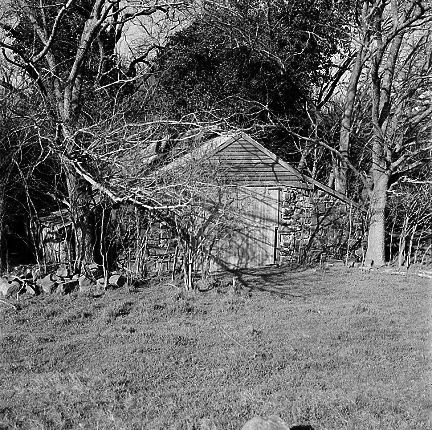Yalla-Y-Poora Homestead, Ararat area, Victoria

[Previous post: Burnewang, Bendigo Vic ... Next post:]
Yalla-Y-Poora Homestead Mount William Road, Tatyoon, VIC, Australia
Yalla-Y-Poora is a large historic working farm in the Western District of Victoria.
The current homestead was built in 1905 in the Federation Free Style, after the original 1865 mid Victorian bluestone home was demolished due to damage caused by continued raising damp.
Yalla-Y-Poora is currently undergoing restoration.
- Featured in the new book: The Constant Renovators Available now from Melbourne University Publishing
- Register of the National Estate (Non-statutory archive) Class Historic; Legal Status Indicative Place

Location
Webbs Road,TATYOON, Ararat Rural City
Statement of Significance
Yalla-Y-Poora Homestead, Tatyoon, is a complex of station buildings built, it is believed, in the 1860's for pastoralist John Ware, although the station dates from the 1840's and has historical associations with the early history of the district. The station buildings are notable as representative examples of their building type and form part of a complex of bluestone structures notable for their distinctive detailing.

- The main house was built in 1905.
- It is a large two storey house built of bluestone and features a picturesquely arranged Edwardian Freestyle two level masonry verandah with projecting bays and a main central arch. Leadlighting and ceiling mouldings feature art Nouveau decoration.
 |  |
 |  |
 |  |
| |||||
Typically, von Guérard's patrons were the squatters who had settled the inland and had become quite prosperous and were perhaps the most important group of art patrons in Victoria.[1] * He was often able to obtain commissions from them to paint 'homestead portraits' in the 1850s and early 1860s. * One of these is Yalla-y-Poora homestead 1864. * Von Guérard was one of several painters who produced these for the wealthy squatters who liked to have their property represented as an image displayed in the house.
|
Manager's Cottage
Manager's bluestone cottage, Yalla-y-poora, Tatyoon, forms part of a complex of station buildings notable as a representative example of their building type, with historical associations with the settlement of the region and architecturally of consequence for their design and detailing.
- The Manager's Cottage is a single storey residence that may date from c.1866.
- The gabled bluestone residence is arranged about a small court with a timber verandah on some sides. Roofs are slate and features include timber bargeboards and a clock.
- The Manager's Cottage is an eclectic design with an essentially Colonial style carcass decorated with Gothic derived bargeboards.
- The Manager's Cottage is understood to be in good condition and essentially intact.
|
| ||||
|
|
The Smithy
The Smithy is a stone structure, constructed in random rubble bluestone. The single storey smithy has a gable iron roof with flatter pitches over presumably later extensions. The gable end is clad in weatherboards.- The Smithy is in a colonial vernacular style and the central section may well be older than the other station buildings. The side extensions are interesting.
- The Smithy is understood to be in fair condition.
- The Coach house and Stables are in a vernacular Gothic Revival style. The buttresses are particularly unusual and the detailing as a whole is distinctive.
- Coach house and Stables are believed to be largely intact and in good condition
- Smithy Classified 05/10/1967
- Coachhouse and Stables Classified 05/10/1967







No comments:
Post a Comment